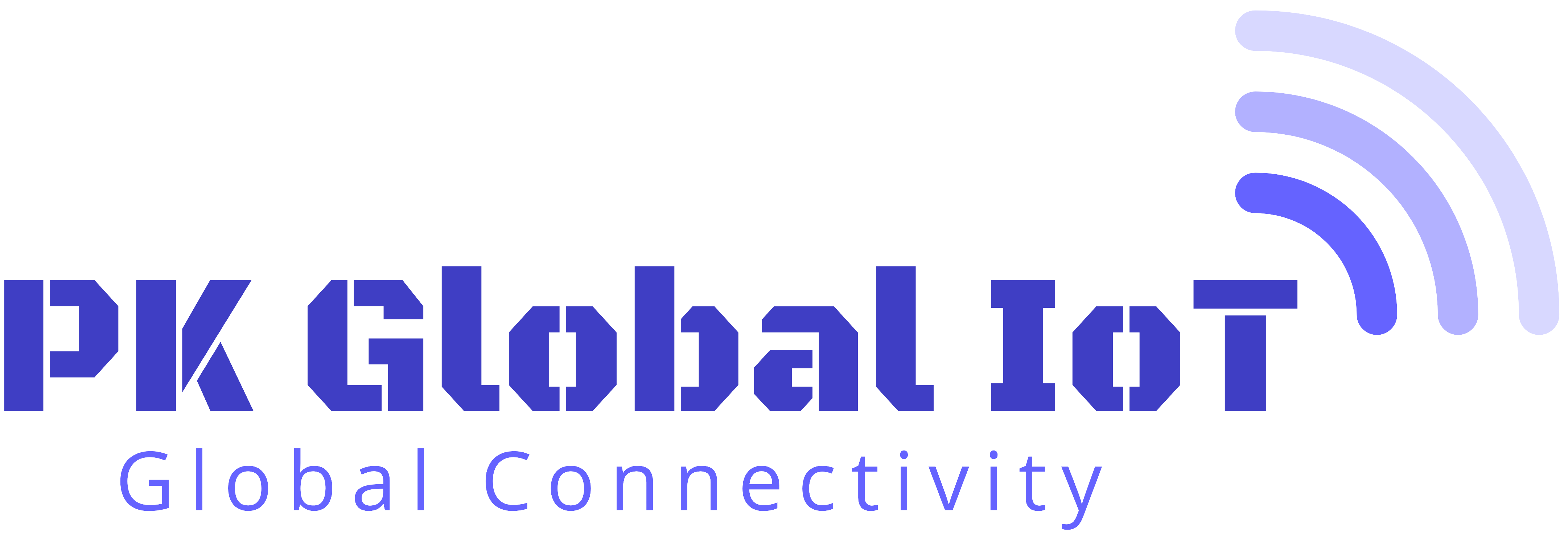As the Internet of Things (IoT) continues to revolutionize industries, choosing the right SIM card for your IoT devices is crucial. At PK Global IoT, we understand the complexities involved in IoT connectivity, and we’re here to help you navigate the differences between various IoT SIM factors. In this blog, we’ll explore the key distinctions, benefits, and use cases for different IoT SIM types to ensure you make the best choice for your business.
1. Standard SIM Cards
Overview: Standard SIM cards, also known as 2FF SIM cards, are the same size as those used in most smartphones. They are widely compatible and easy to replace.
Benefits:
- Ease of Use: Simple to install and replace.
- Compatibility: Works with a wide range of devices.
Use Cases:
- Consumer electronics
- Smart home devices
Considerations: Standard SIM cards are relatively large, which may be a limitation for compact IoT devices.
2. Micro SIM Cards
Overview: Micro SIM cards (3FF) are smaller than standard SIM cards but larger than nano SIMs. They provide a balance between size and compatibility.
Benefits:
- Reduced Size: Saves space in devices while maintaining compatibility with many older models.
- Versatility: Suitable for medium-sized IoT devices.
Use Cases:
- Wearables
- Security systems
Considerations: While more compact than standard SIMs, micro SIMs are still not ideal for the smallest IoT devices.
3. Nano SIM Cards
Overview: Nano SIM cards (4FF) are the smallest traditional SIM cards available. They offer significant space savings for compact IoT devices.
Benefits:
- Minimal Size: Ideal for space-constrained applications.
- Advanced Compatibility: Fits the latest and smallest IoT devices.
Use Cases:
- Health monitors
- Advanced wearables
Considerations: Nano SIM cards can be more challenging to handle due to their small size.
4. Embedded SIMs (eSIM)
Overview: Embedded SIMs (eSIMs or MFF2) are soldered directly onto the device’s motherboard, eliminating the need for a physical SIM slot.
Benefits:
- Durability: Resistant to physical wear and tear.
- Remote Provisioning: Can be programmed and updated remotely, providing greater flexibility.
- Space Saving: Ideal for the smallest IoT devices.
Use Cases:
- Industrial IoT
- Smart metering
- Automotive applications
Considerations: eSIMs are not easily replaceable, making initial provisioning crucial. They also require compatible hardware and network support.
5. Integrated SIM (iSIM)
Overview: Integrated SIMs (iSIMs) are integrated into the device’s chipset, offering the ultimate in space efficiency and security.
Benefits:
- Ultimate Miniaturization: Ideal for ultra-compact devices.
- Enhanced Security: Offers advanced security features due to integration with the chipset.
- Remote Management: Supports remote provisioning and management.
Use Cases:
- Tiny wearables
- High-security applications
Considerations: iSIM technology is relatively new and may require specific hardware and network support.
Conclusion
Choosing the right SIM factor for your IoT devices is essential for optimizing performance, cost, and reliability. At PK Global IoT, we provide a range of IoT connectivity solutions tailored to your specific needs. Whether you’re deploying industrial sensors or consumer wearables, our expert team is here to guide you through the selection process and ensure seamless global connectivity.
Ready to find the perfect IoT SIM solution for your business? Contact PK Global IoT today and let’s get started.
Stay connected with PK Global IoT—your partner in seamless IoT





